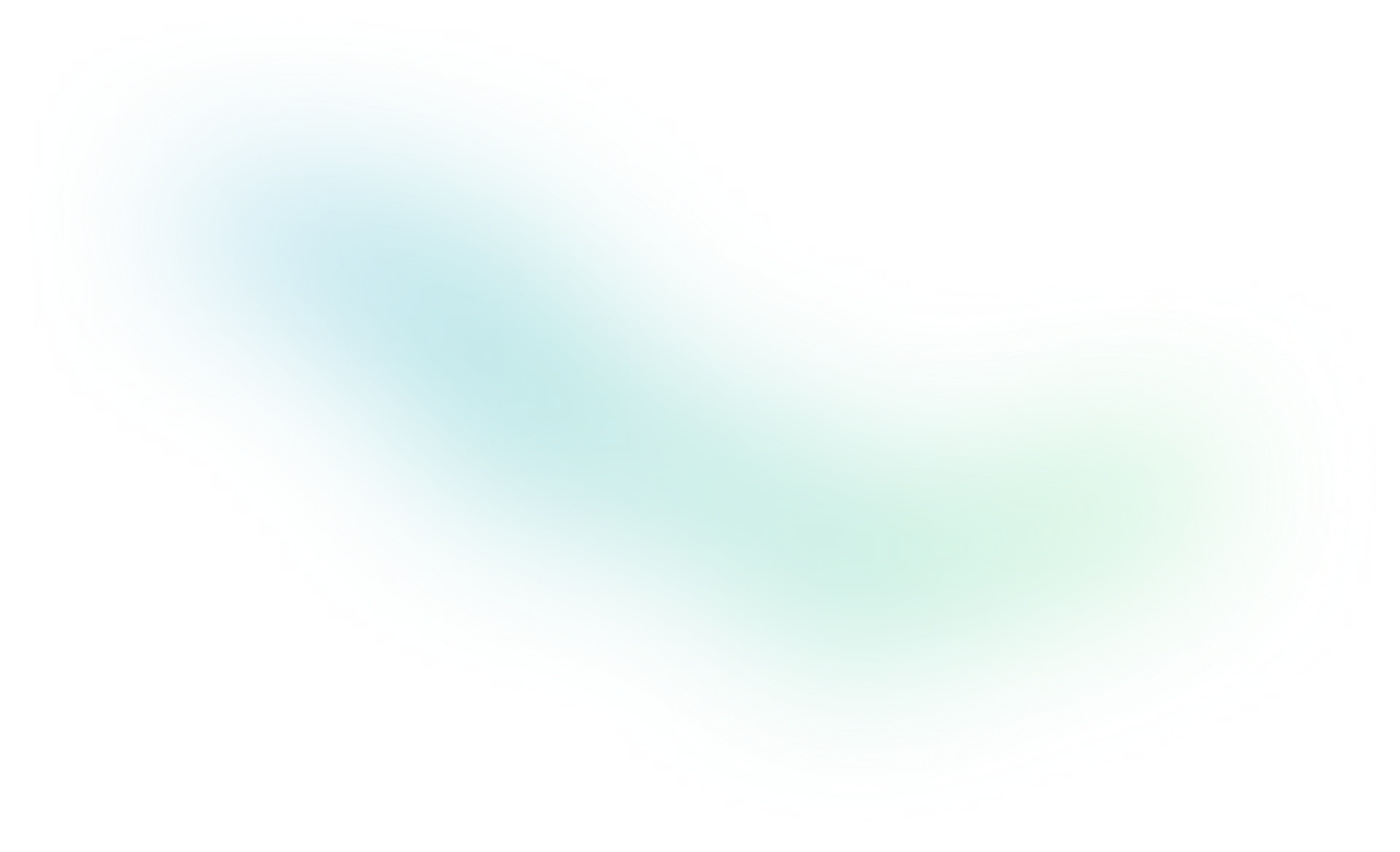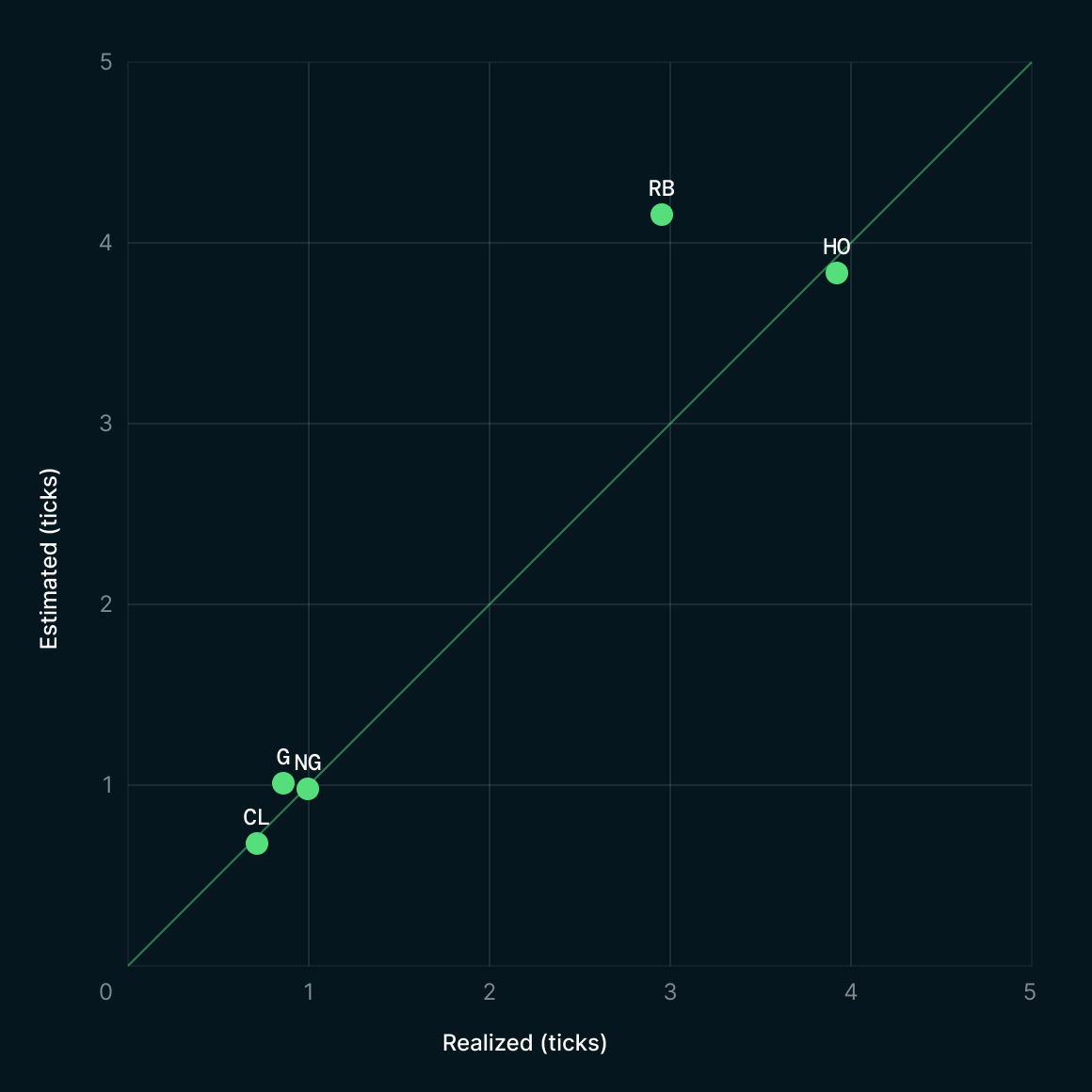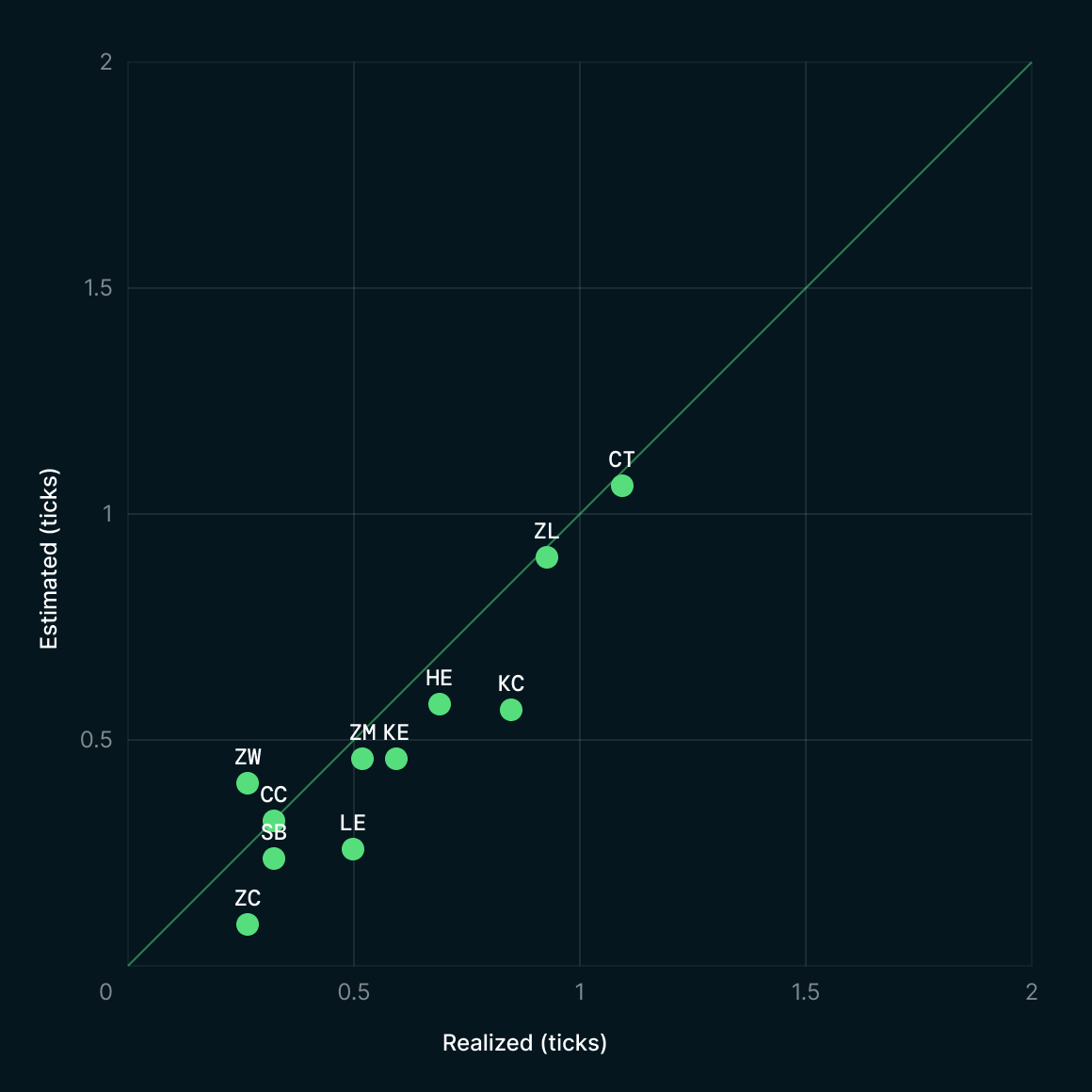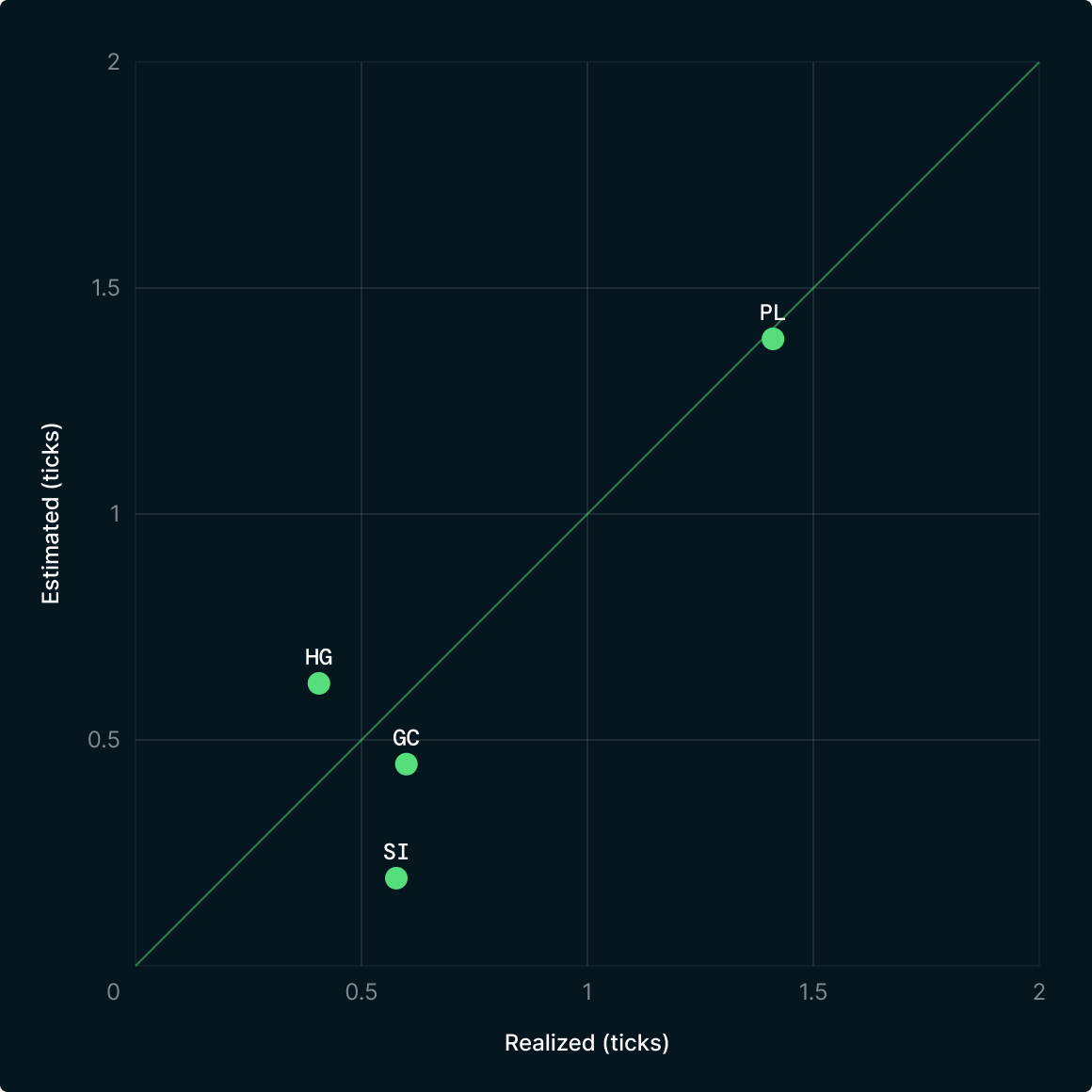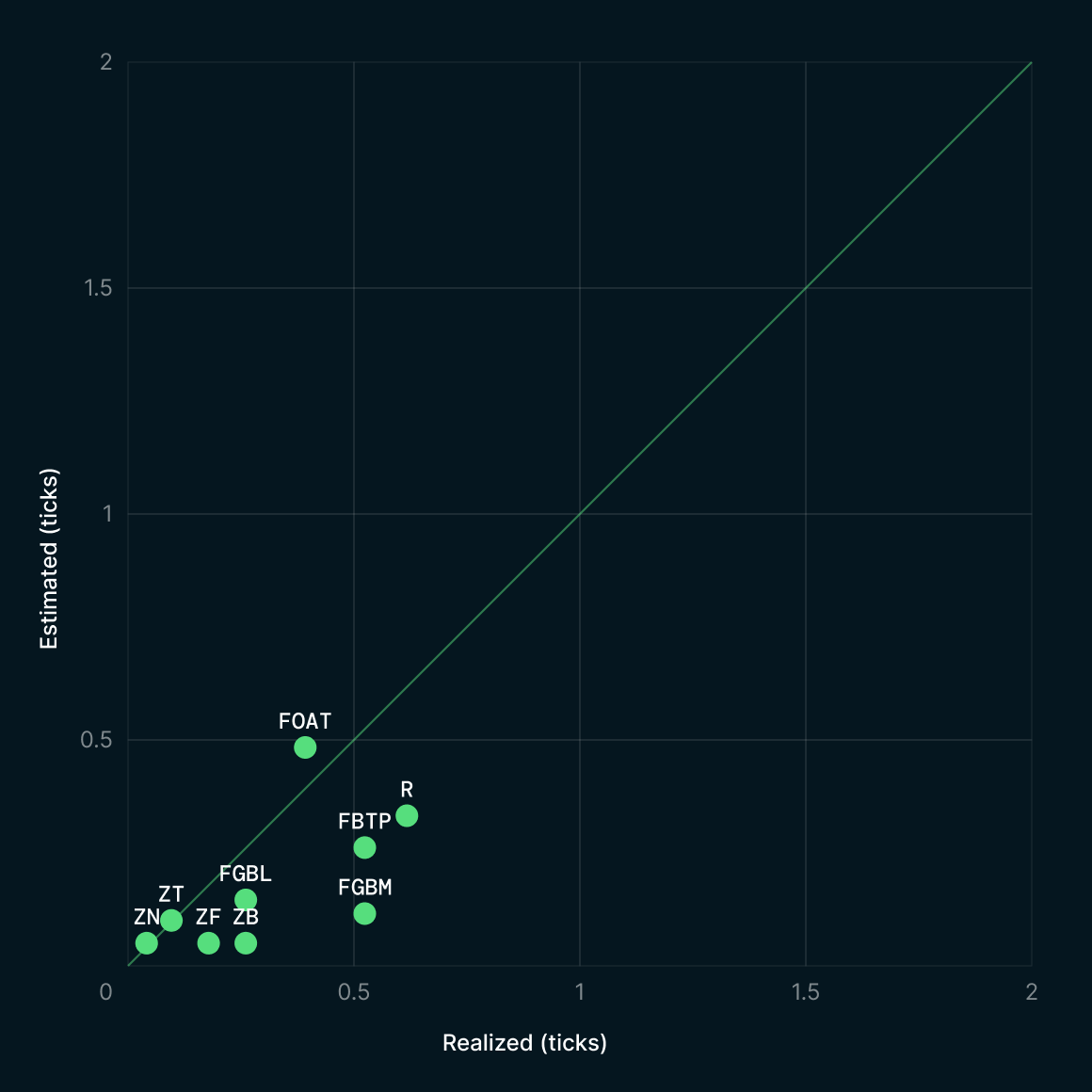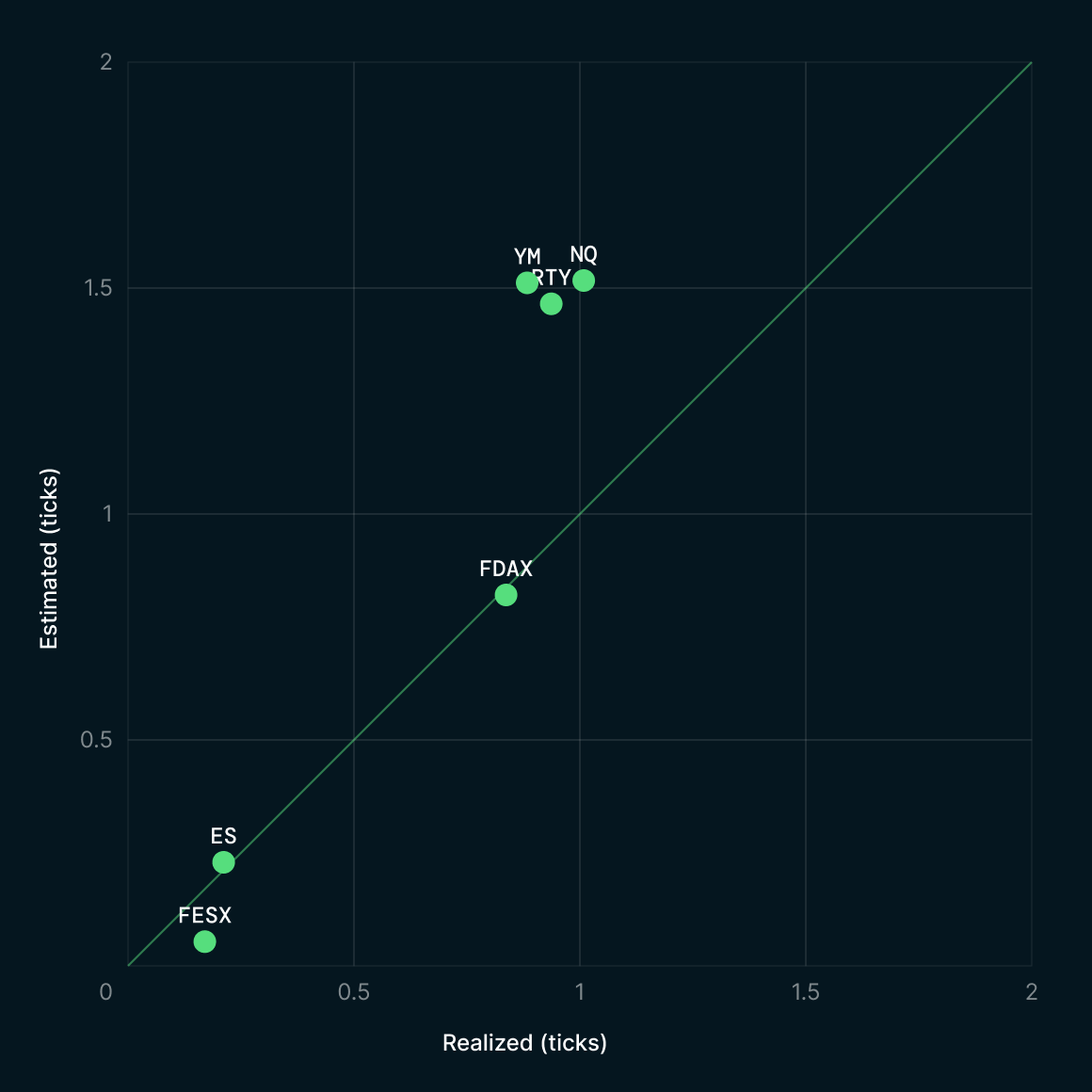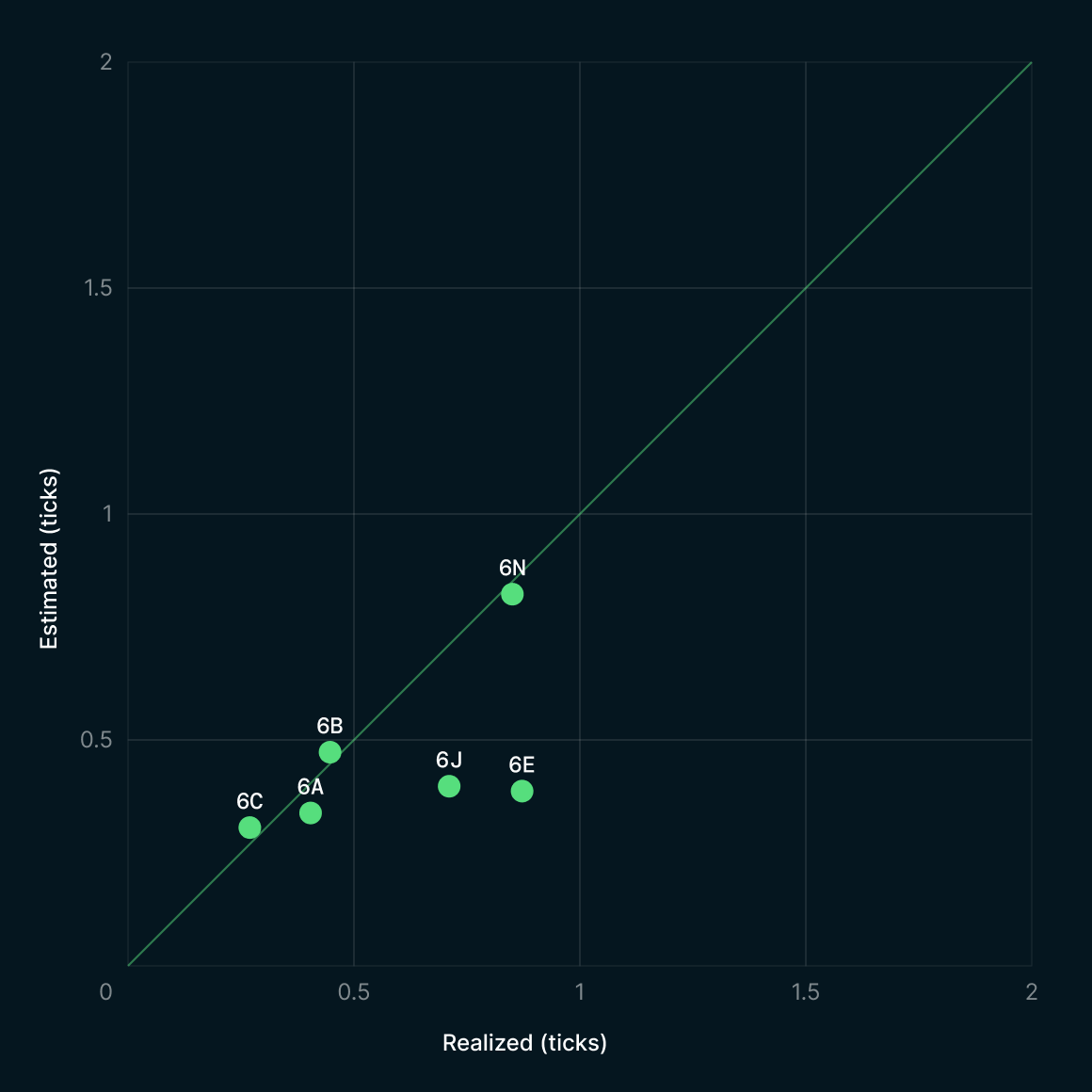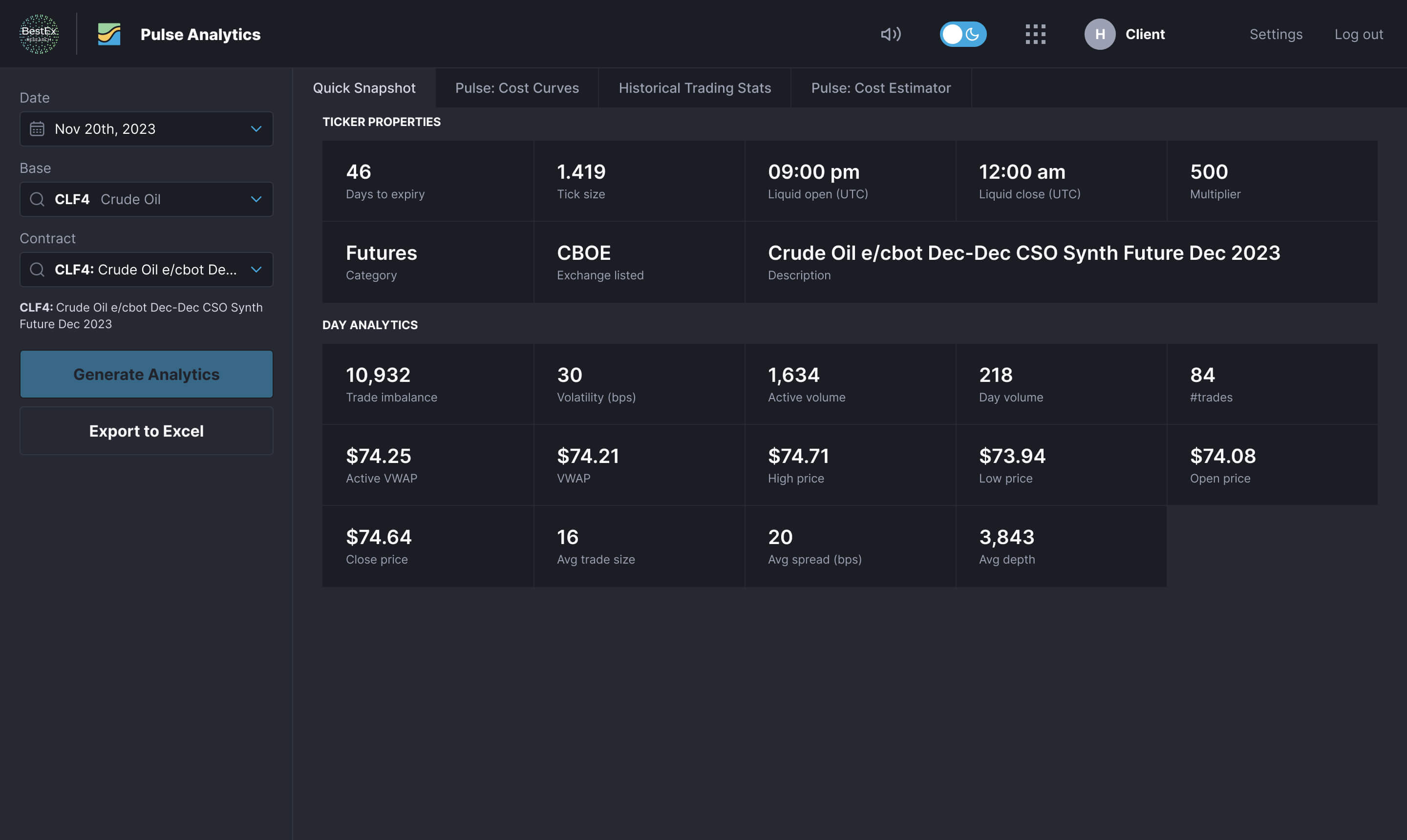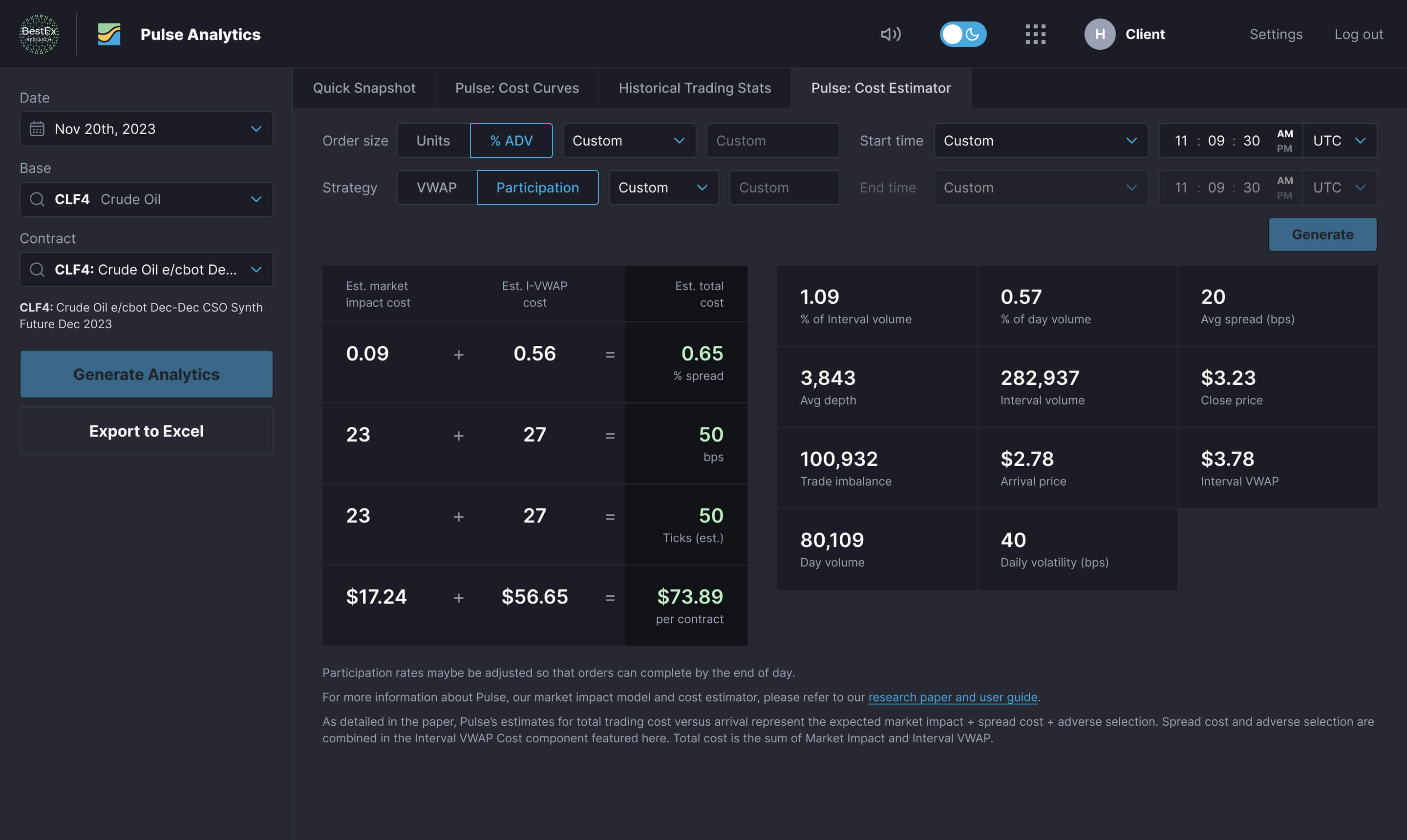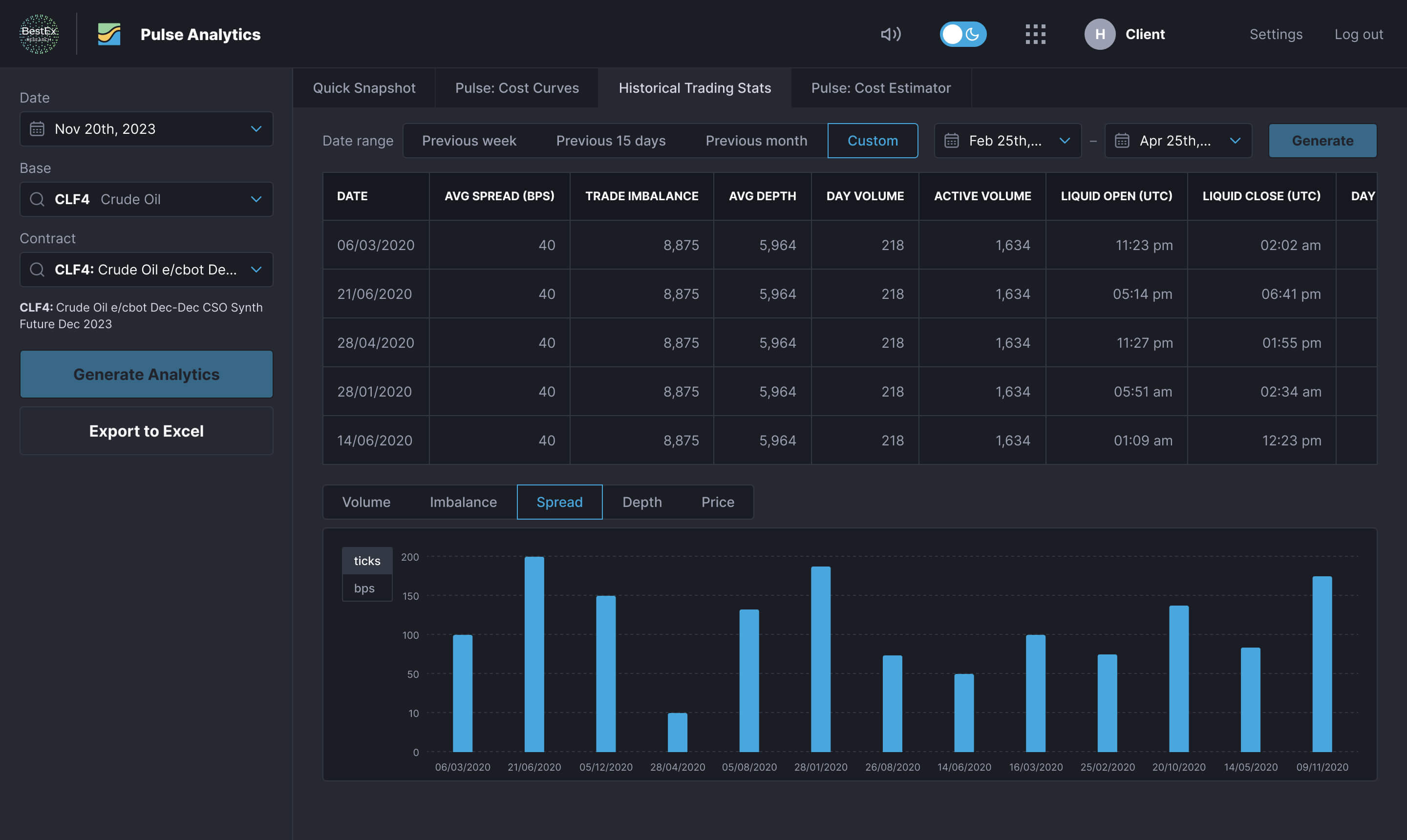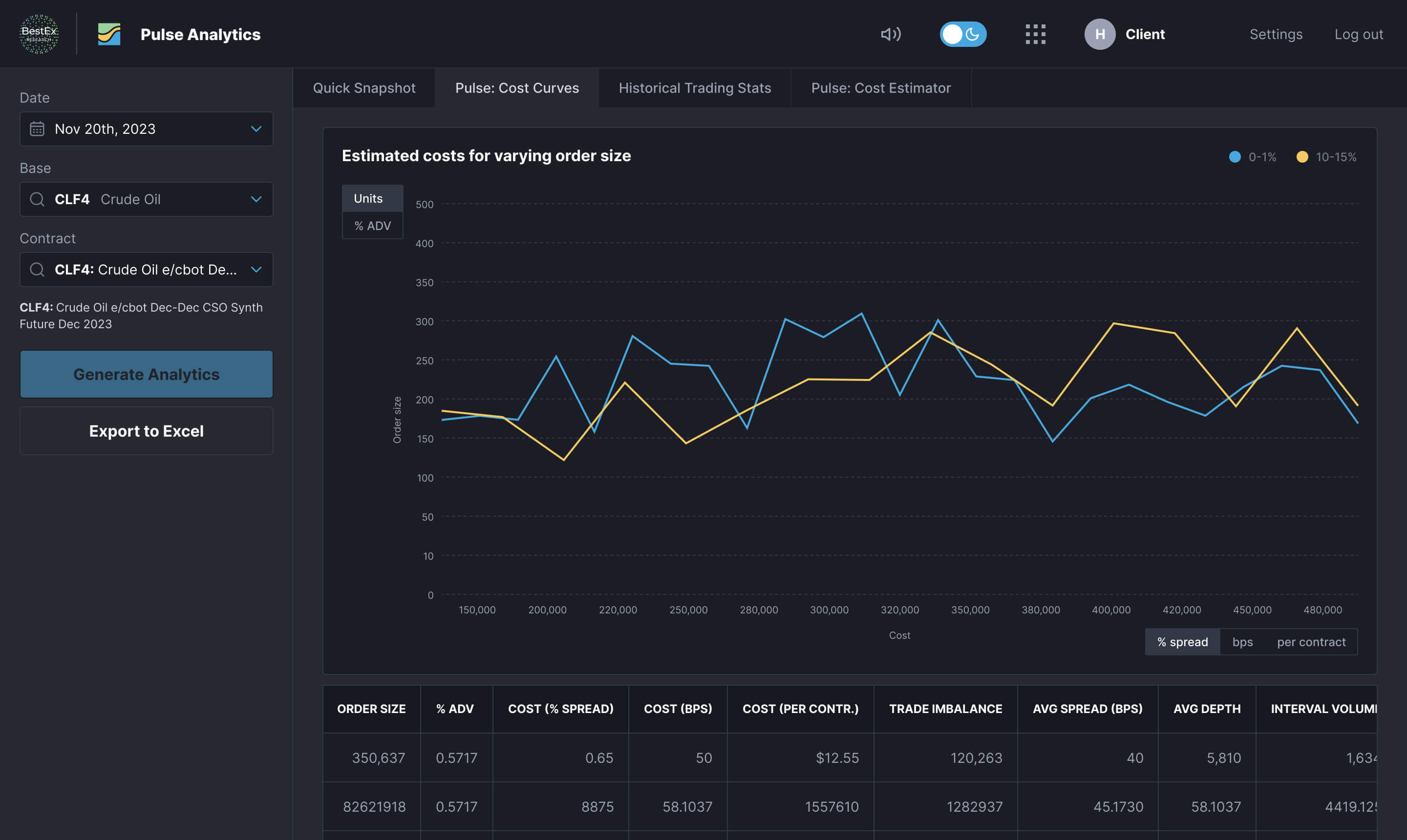
Cost-estimator-fixed-duration
Provides estimated cost of trading a specified contract from a specified start time to a specified end time for specified order size.
Notes:
1) If end time is specified beyond market close, the model will assume order ends at market close and increase participation to complete order accordingly. All output will align with this change.
2) "trailing days" & "val" parameters are optional, with default values indicated below. All other parameters are required.
start_time
Start time of the intraday period in the format HH:MM:SS
end_time
End time of the intraday period in the format HH:MM:SS
ordersize
Size of the order (no. of contracts)
exchange_symbol
Enter exchange symbol of contract
futures_base_symbol
Respective base symbol. Must align with the exchange symbol
date
Date to estimate for in the format YYYY-MM-DD. For historical, no more than one year prior
trailing_days
Number of previous days to include in estimated analytical inputs to model (default value n=7). Larger values require more estimation time; we recommend limiting to 30 days
val
Use 'n' for estimated model inputs (e.g., estimated spread, depth, etc.). For realized data as model inputs use 'y'; this option is available for historical dates only. Default value: 'n'
Cost-estimator-fixed-participation
Provides estimated cost of trading a specified contract at a specified start time with specified participation rate and order size.
Notes:
1) If the estimated end time is beyond market close, model will assume order ends at market close and increase participation to complete order accordingly. All output will align with this change.
2) "trailing days" & "val" parameters are optional, with default values indicated below. All other parameters are required.
start_time
Start time of the intraday period in the format HH:MM:SS
participation
Enter participation rate (0.0 - 1.0)
ordersize
Size of the order (no. of contracts)
exchange_symbol
Enter exchange symbol of contract
futures_base_symbol
Respective base symbol. Must align with exchange symbol
date
Date to estimate for in the format YYYY-MM-DD. For historical, no more than one year prior
trailing_days
Number of previous days to include in estimated analytical inputs to model (default value n=7). Larger values require more estimation time; we recommend limiting to 30 days
val
Use 'n' for estimated model inputs. For realized data as model inputs use 'y'; this option is available for historical dates only. Default value: 'n'
Estimated stats
Provides estimated analytics for a specified product from a specified start time to a specified end time.
Notes:
"trailing days" & "val" parameters are optional with default values indicated below. All other parameters are required.
start_time
Start time of the intraday period in the format HH:MM:SS
end_time
End time of the intraday period in the format HH:MM:SS
exchange_symbol
Enter exchange symbol of contract
date
Date in format YYYY-MM-DD. For historical, no more than one year prior
trailing_days
Number of previous days to include in estimated analytics (default value n=7). Larger values require more estimation time; we recommend limiting to 30 days
Realized stats
Calculates the realized analytics (historical) for a specified exchange symbol from aspecified start time to a specified end time.
All parameters are required.
start_time
Start time of the intraday period in the format HH:MM:SS
end_time
End time of the intraday period in the format HH:MM:SS
exhange_symbol
Enter exchange symbol
date
Date in format YYYY-MM-DD; no more than one year prior
Daily trading stats
Provides realized daily analytics for a specified exchange symbol from a specified start date to a specified end date.
All parameters are required.
exchange_symbol
Enter exchange symbol to fetch respective trading stats
start_date
Start date of range in the format YYYY-MM-DD; no more than one year prior
end_date
End date of range in the format YYYY-MM-DD; no more than one year prior
Active-instruments
Provides a list of contracts (varying expiries) traded on a given day for a specified base symbol; if no active instruments are found, “None” is returned.
All parameters are required.
futures_base_symbol
Base symbol for which to fetch active contracts
date
Active date of contracts to be returned in the format YYYY-MM-DD. For historical, no more than one year prior
Supported-symbols
Provides a list of base symbols supported by the API.
This endpoint takes no parameters.
This function takes no parameters

